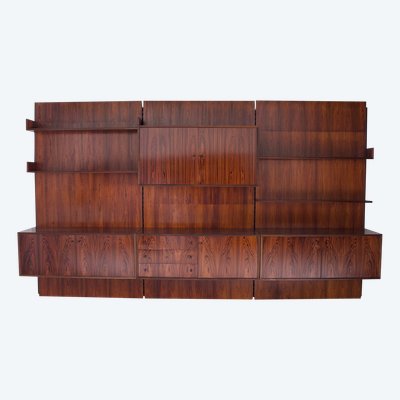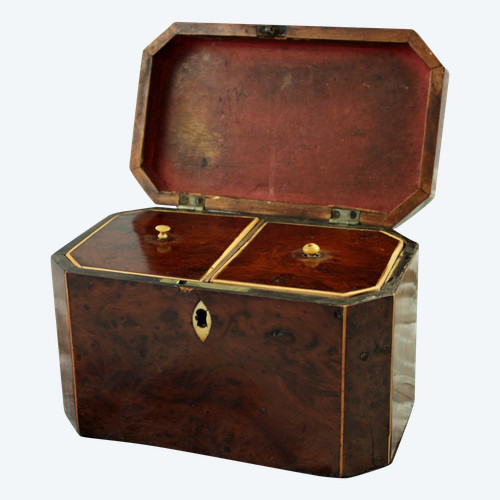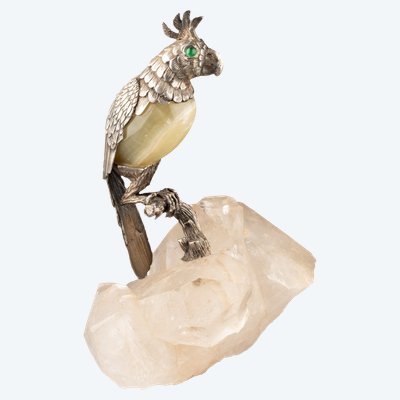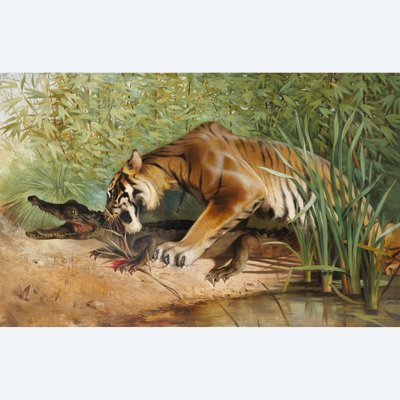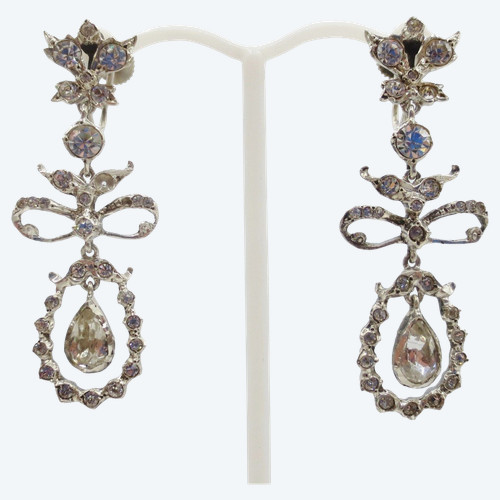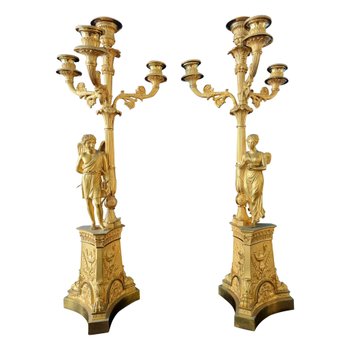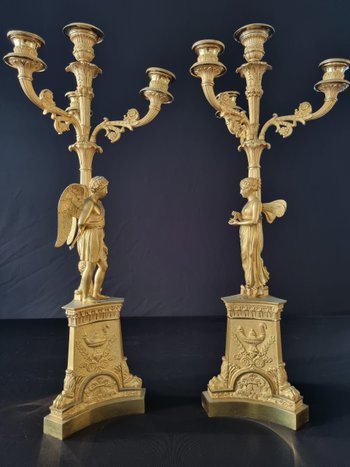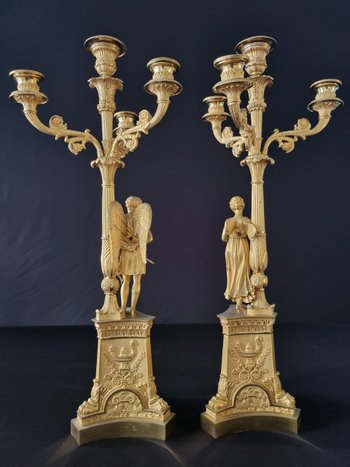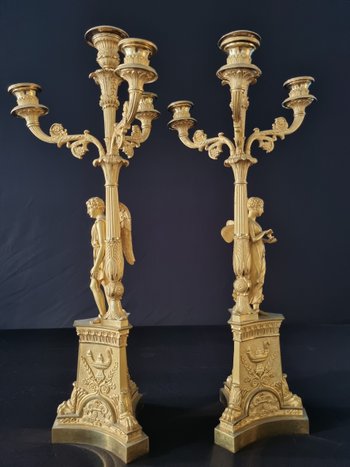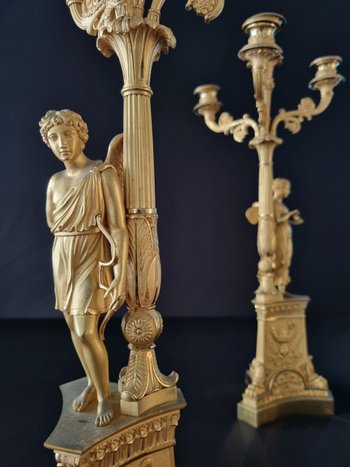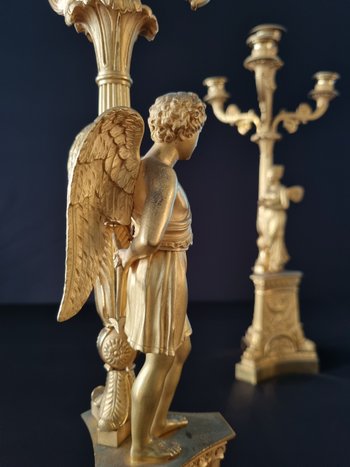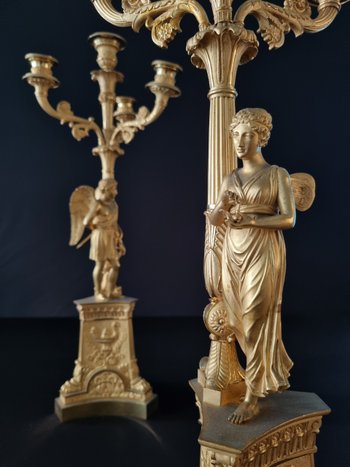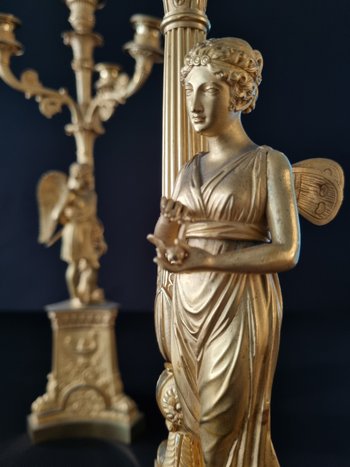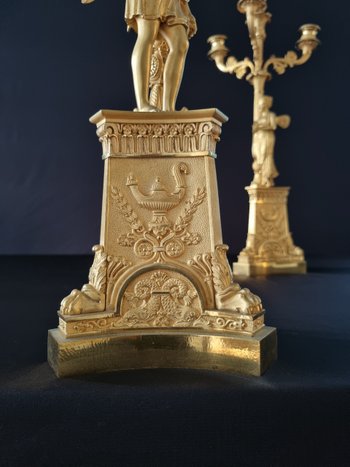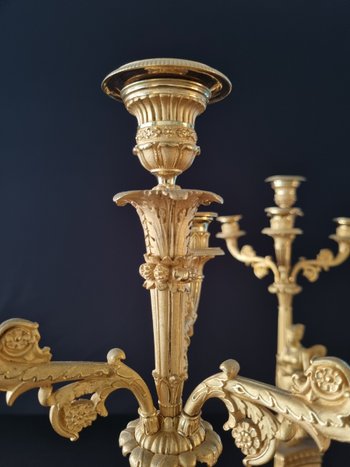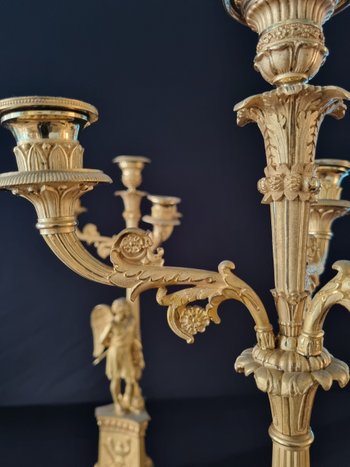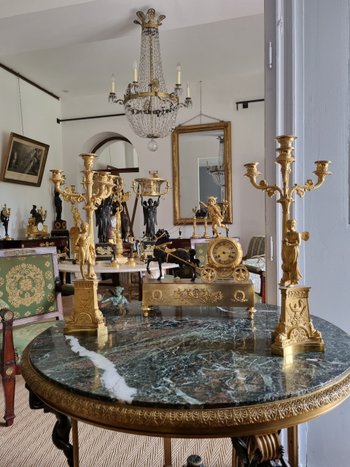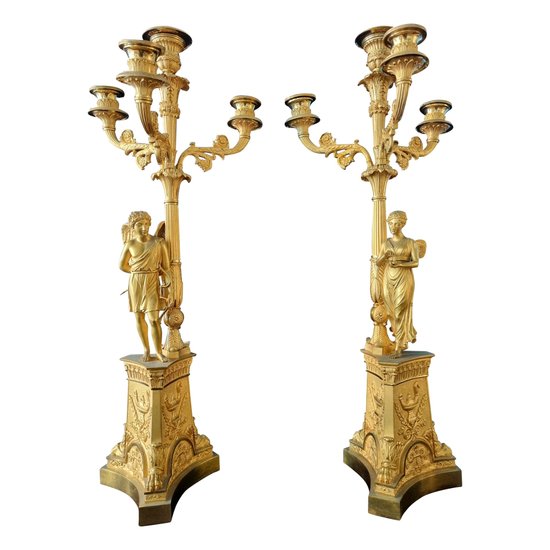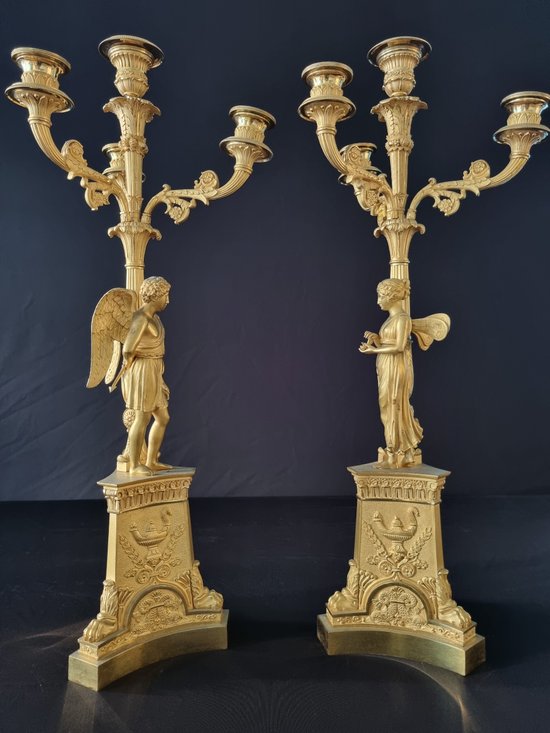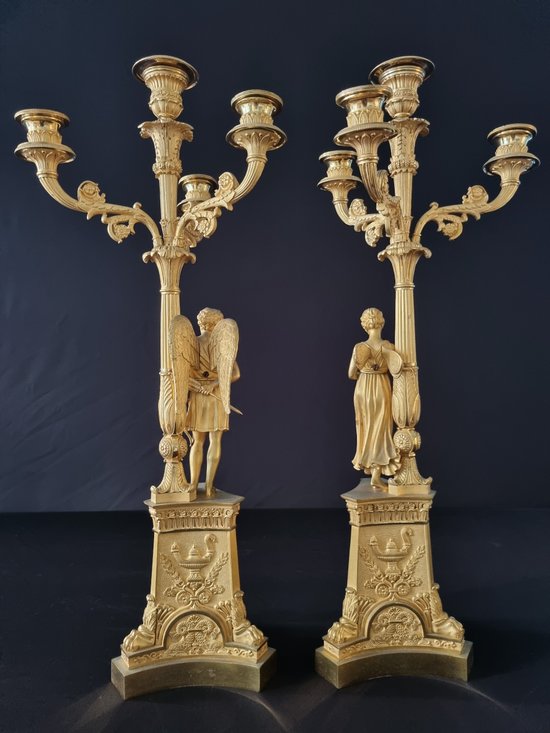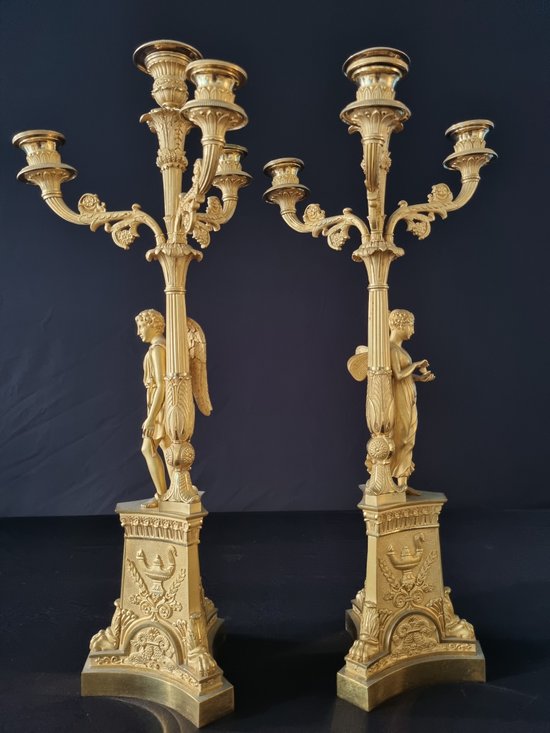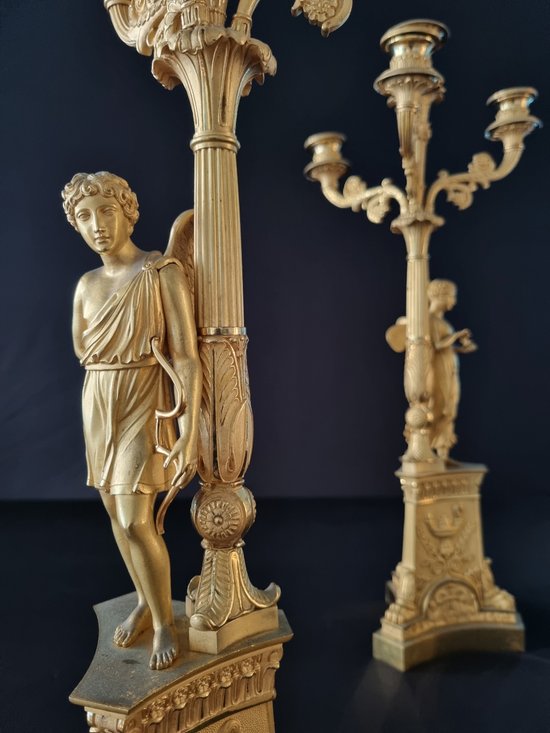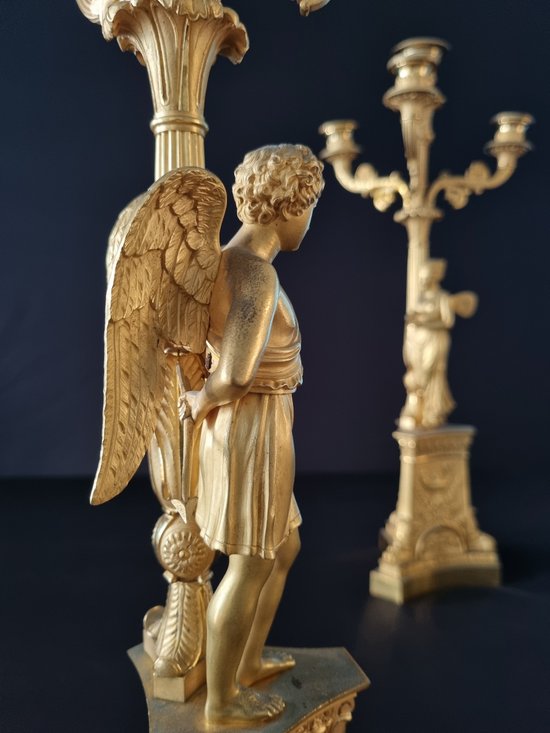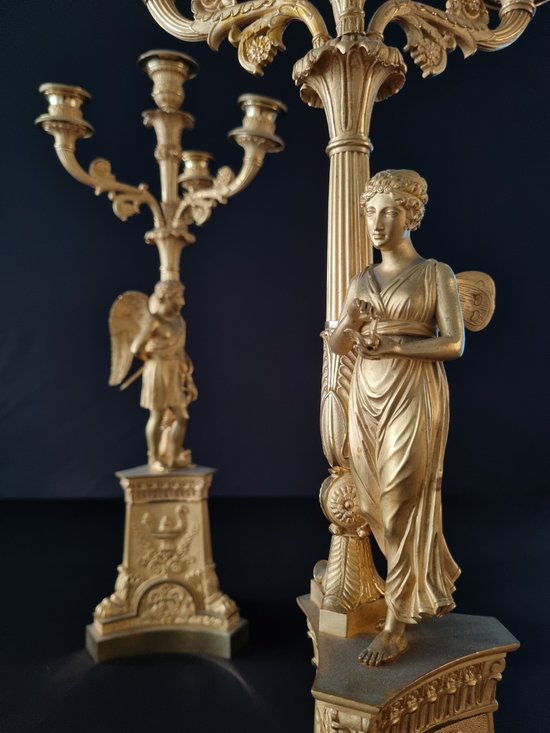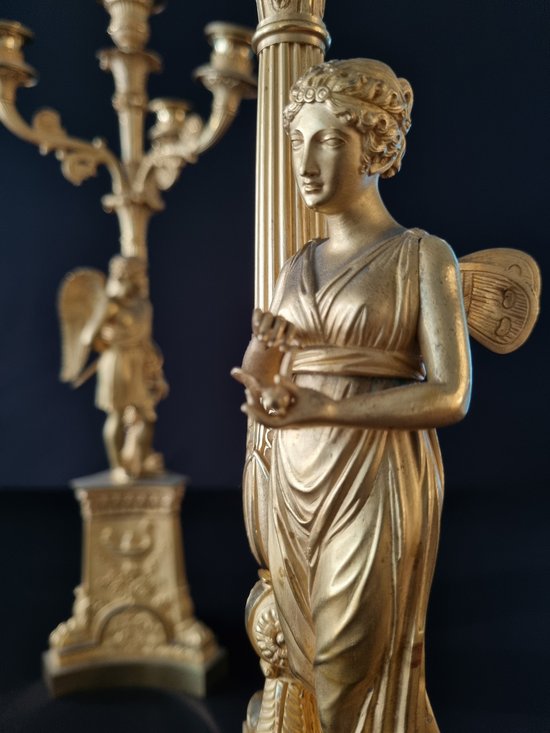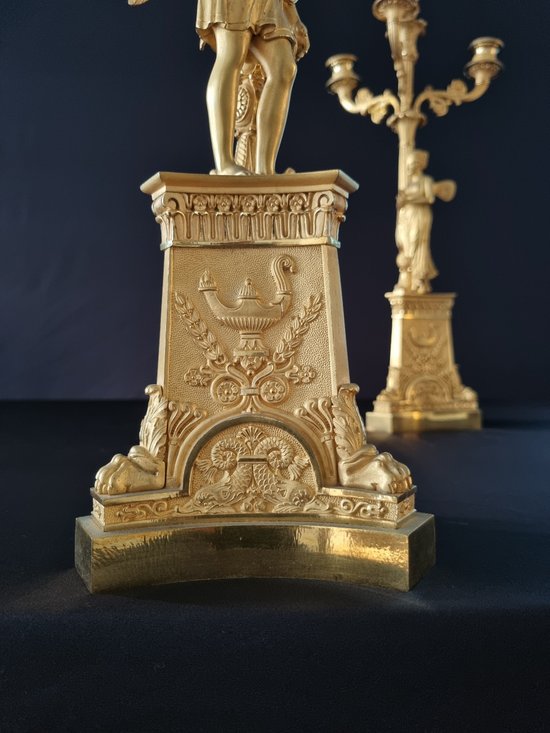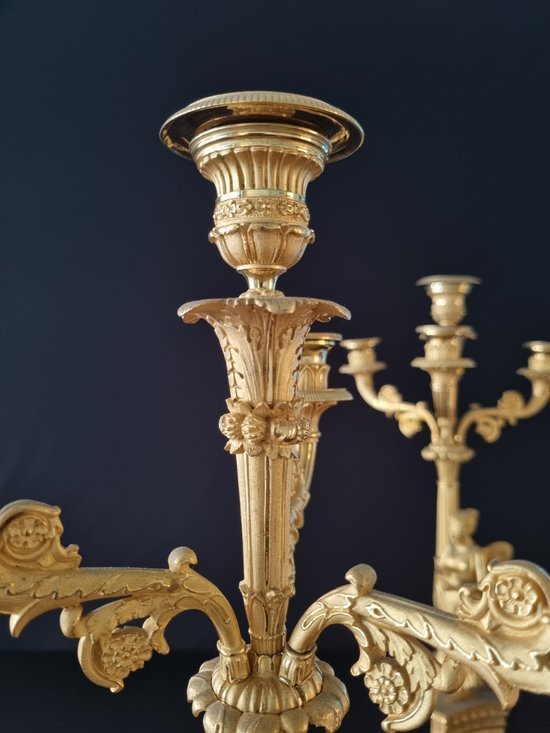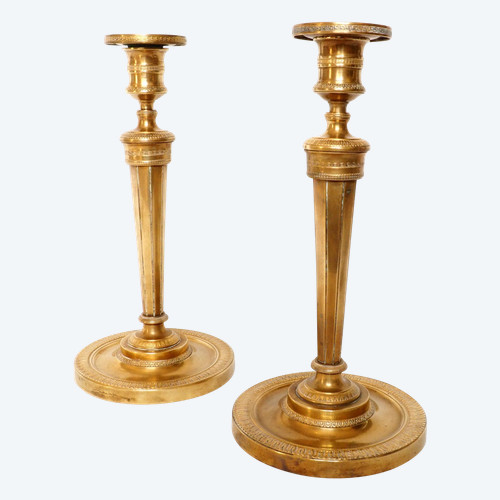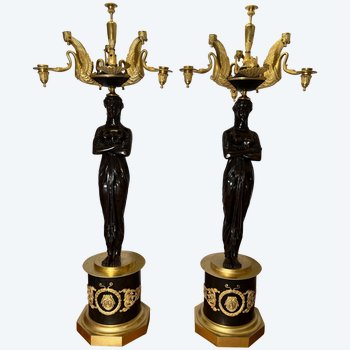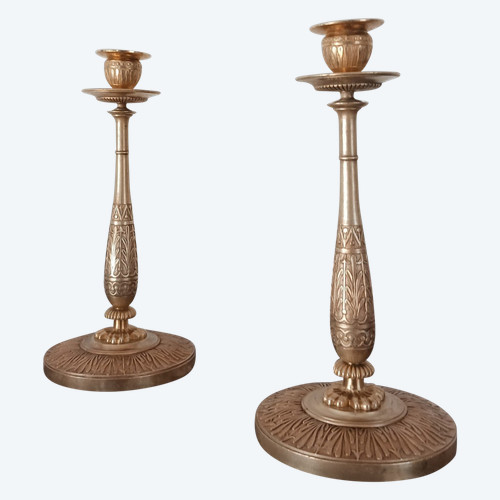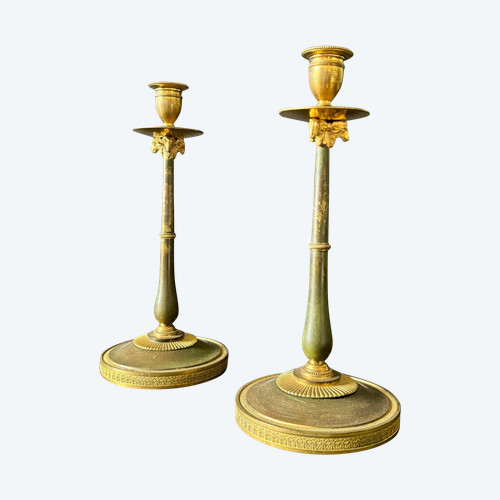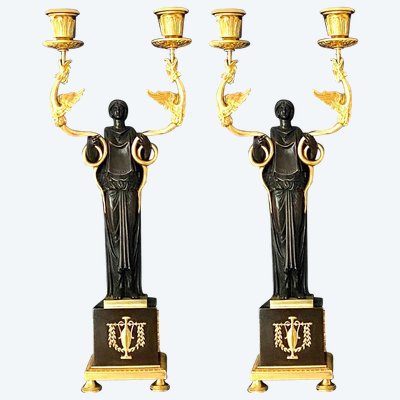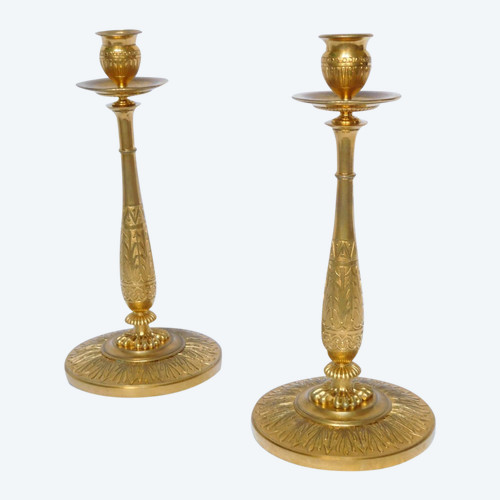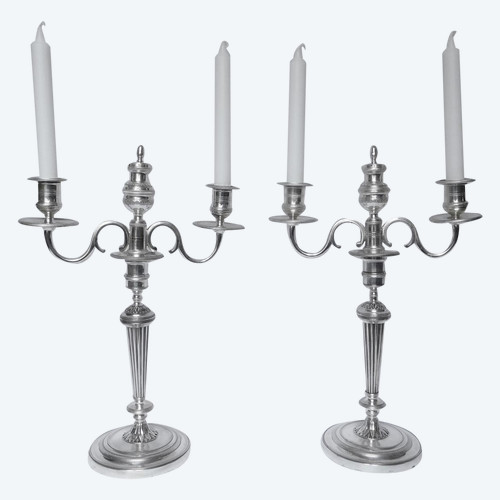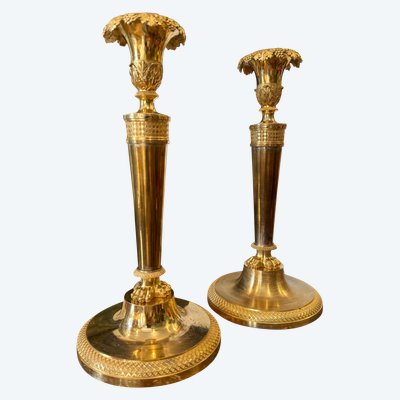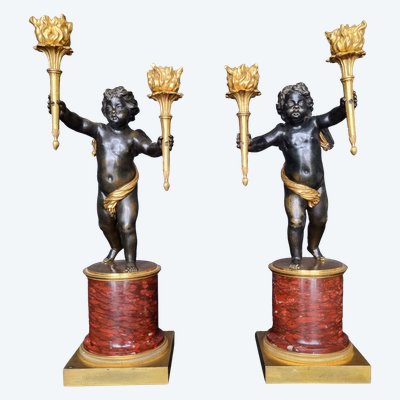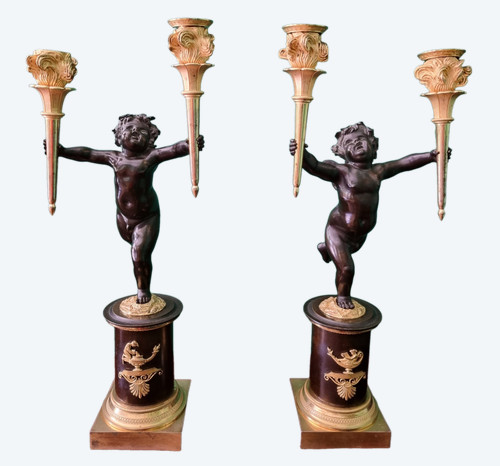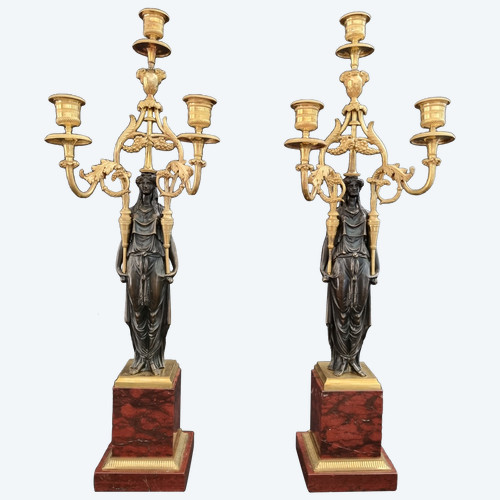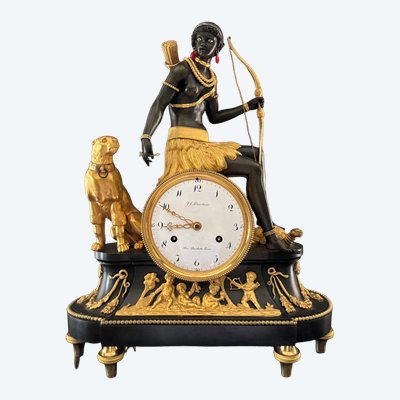This description has been translated and may not be completely accurate. Click here to see the original
This magnificent pair of candelabra in gilded bronze from the Empire period presents us, in terms of gilding and carving, the excellence of the French bronze masters (carsivers, gilders) under the First Empire.
At a time when superlatives are used excessively to present "classic" pieces, it is appropriate for this pair of candelabra to use a few.
The superb original gilding and its matte and shiny contrasts are characteristic of that of Claude Galle.
Like François Rémond, Claude Galle has a gilding easily recognizable by amateurs. Just as some connoisseurs locate a wine through its robe.
If Claude Galle can be identified thanks to his gilding, it is just as much by his artistic way of creating his characters. The latter always express movement, their aspects are slender.
As Ottomeyer and Pröschel noted in Vergoldete Bronzen, vol. I:
"the style of body modeling specific to Claude Galle, is characterized by a mannerist elongation of proportions and an effort to express emotion in posture and facial expression"
The two characters in this pair of candelabra, Cupid and Psyche, express this perfectly. The expression of feelings is subtly transcribed, we feel the modesty and attraction of the most famous lovers of mythology.
Psyche, gazing at the butterfly she holds in her hands, evoking purity of soul and innocence.
Cupid spying on the beauty, hiding the magic arrow behind her back, no longer knowing if he should use it.
Each character stands next to a magnificent torchiere forming the base of the four sconces.
The triangular base with curved sides, carved with oil lamps, olive branches, lotuses and dolphins. The sides with cut sides ending in claw feet.
This pair of candelabra is in a perfect state of conservation, magnificent original gilding.
Empire period
Dimensions:
Height 56cm
Width 24cm
Claude GALLE (1759-1815):
Considered one of the most important bronzers of the end of the 18th century and the beginning of the 19th century, Claude Galle is today a reference for bronze in the neoclassical style. From the beginning of his career, he became a collaborator of famous founders such as Antoine-André Ravrio and Jean Hauré. This allows him to participate in the development of bronzes for the furniture of the crown. Under the Consulate, he quickly became Philippe Thomire's main competitor. It provides the imperial furniture storage, thus furnishing the castles of Compiègne and Fontainebleau. Retiring in 1813, he was replaced by his son Gérard-Jean. These objects, once very popular with the English and Russians, inspired bronzers such as Andrei Voronikhin (1759-1814) and Friedrich Bergenfeldt (1768-1822). He died in 1815 after having produced works that are the pride of major collections.
Ref: 6ULM2VIMSX
 Modular wall shelf in rosewood.
4.800 € EUR
Modular wall shelf in rosewood.
4.800 € EUR
 19th century mahogany burr veneer box
160 € EUR
19th century mahogany burr veneer box
160 € EUR

